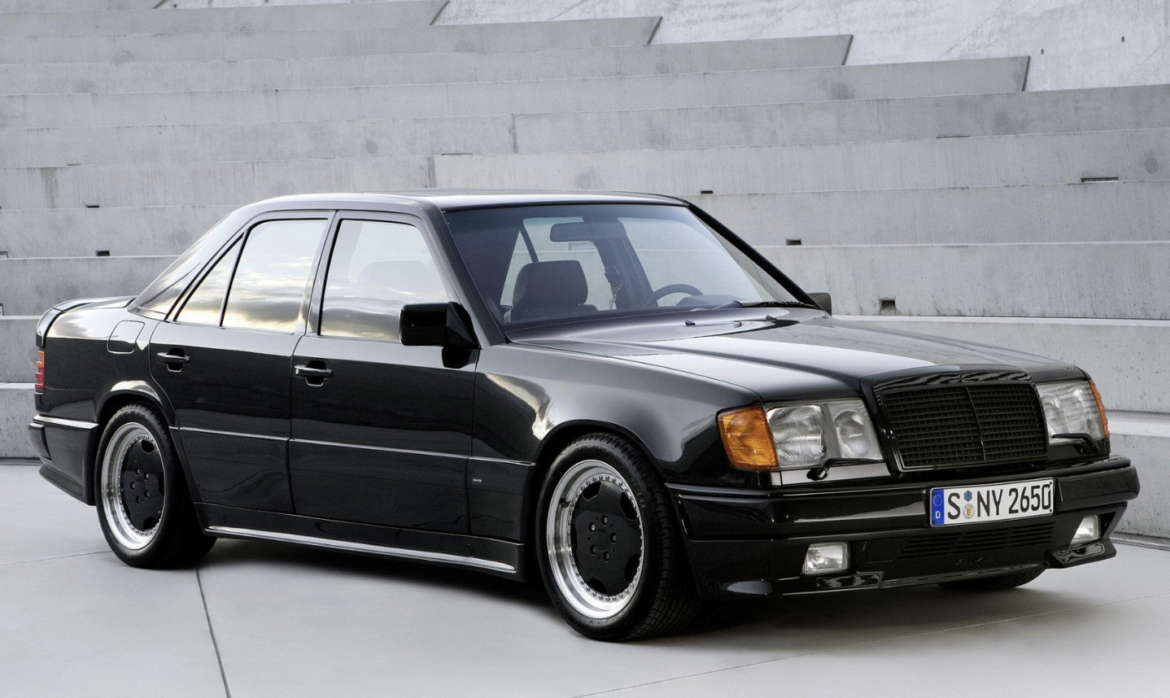Don’t ask, “What’s in a name?” Hammer means in German precisely what it means in English, and this car’s name says exactly what it is: a hard-hitting tool. AMG crafts it to pound everything else flat.
The Corvette, the 911 Turbo, the Testarossa, and the Countach may be a wee bit quicker in a category or two, but no cigars. They may also take the cake for sex appeal, a highly prized attribute in this speedy league. But this four-door German hot rod utterly flattens them all on comfort, on practicality, and, most important, on the absolutely unadulterated, instantly available ability to rocket across the face of the earth. The Hammer we tested leaped from 0 to 60 mph in five seconds flat. It hurtled through the quarter-mile in 13.5 seconds at 107 mph. And it pounded down a long, flat straightaway to a top speed of 178 mph.
Like the Corvette, the 911 Turbo, the Testarossa, and the Countach, the Hammer covers ground so quickly that you swear you can feel the earth’s curvature racing to meet you. Yet the Hammer is different. This AMG-modified sedan keeps you completely at ease as you pierce the atmosphere like a horizontal bolt of lightning. All that’s lacking is the stench of scorched sulfur from the shocked aftermath of your receding thunder.
We have watched AMG, Germany’s famed Mercedes-Benz tuning firm, tap an ever wiser and wider range of experience. Always high on horsepower, the company has now come to grips with handling and aerodynamics as well. Hans-Werner Aufrecht, its owner, and Richard Buxbaum, his henchman at AMG of North America, in the Chicago suburb of Westmont, are moving quickly to expand their market. How better than by offering the fastest sedan available anywhere?
The heart of the matter is a brawny V-8 stuffed into the hole left by the removal of the standard Mercedes in-line engine. The Hammer conversion begins with the disassembly of a brand-new 5.5-liter powerplant from the S-class line. After polishing, blueprinting, and balancing the all-aluminum engine’s gleaming guts, AMG swaps the stock single-cam, two-valve-per-cylinder heads for its own free-breathing twin-cam, four-valve-per-cylinder units. Each engine is carefully reassembled and tested on a dynamometer for eight to ten hours.

